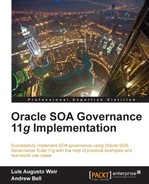In the early years of web services and service-oriented architecture, it felt as if people working for Microsoft, IBM, and a handful of startups were the only ones who really understood the power of what was being defined and created. At that time, I had the bittersweet opportunity of working for Talking Blocks with Mark Potts, Mark Perreira, and Dave Stanton. We focused heavily on web services management and it frequently felt as if we were Don Quixote chasing the IT windmills. When Talking Blocks was acquired by Hewlett-Packard (and then HP subsequently acquired Mercury Interactive which had acquired Systinet), it felt as if I had the opportunity to work with another group of like-minded people who truly understood the power we held in our hands and had experienced many of the same trials and tribulations that I had in those early days of SOAP, WSDL, and UDDI. It was both rewarding and invigorating. Looking back, many of those startups and the ideas that were created were so far ahead of the market.
Today, we are seeing the power of those innovative, architectural concepts manifesting themselves as everything becomes a service; from infrastructure, to application construction and integration platforms, to applications. But, perhaps more subtle are the changes driven out from the adoption of service-orientation, such as the shift from waterfall methodologies to more iterative approaches, automated build systems enabling continuous integration of these loosely-coupled systems, and now API Management to engage and enable the latest generation of developers to tap that valuable content and those integrated systems traditionally locked up behind the corporate firewall delivering truly innovative applications on mobile devices. The results of these changes have led to an explosion in the interconnected nature of devices everywhere, now called the Internet of Things; the resulting data these devices are capable of constantly churning out is driving the notion of Big Data.
What becomes very clear is that the principles of SOA Governance are more important than ever. Industry wide, we must remain focused on how to effectively engage and communicate with a community of developers. How can organizations define and guide communities of developers in the most effective and efficient way possible to maximize the value of their work, both within the typical enterprise and now beyond the firewall with the explosion of mobile applications? More than 10 years on and with millions of web services created, the value of SOA Governance is now easier to explain and understand than it was in those early days.
SOA Governance remains focused on people and processes; where the adoption of anything new is nearly always met with resistance. In the pages that follow, the complex interconnections between people, processes, and technology that make up SOA Governance are explored using easy to understand examples extracted from real experiences. As you follow the journey of Weir & Bell Telecom, I hope you can better understand the relationship between the people and the processes involved in achieving robust and effective SOA Governance and are able to begin to apply these principles and technologies within your organization. But, most importantly, the success of your SOA Governance initiative will be based on your ability to apply pragmatism both in terms of the speed of change that your organization can support and effectively engaging the community of stakeholders who will ultimately drive the processes and achieve the desired goals and objectives.
Tim E. Hall
Vice President of Product Management,
Integration & Business Process Management,
Oracle Corporation.
